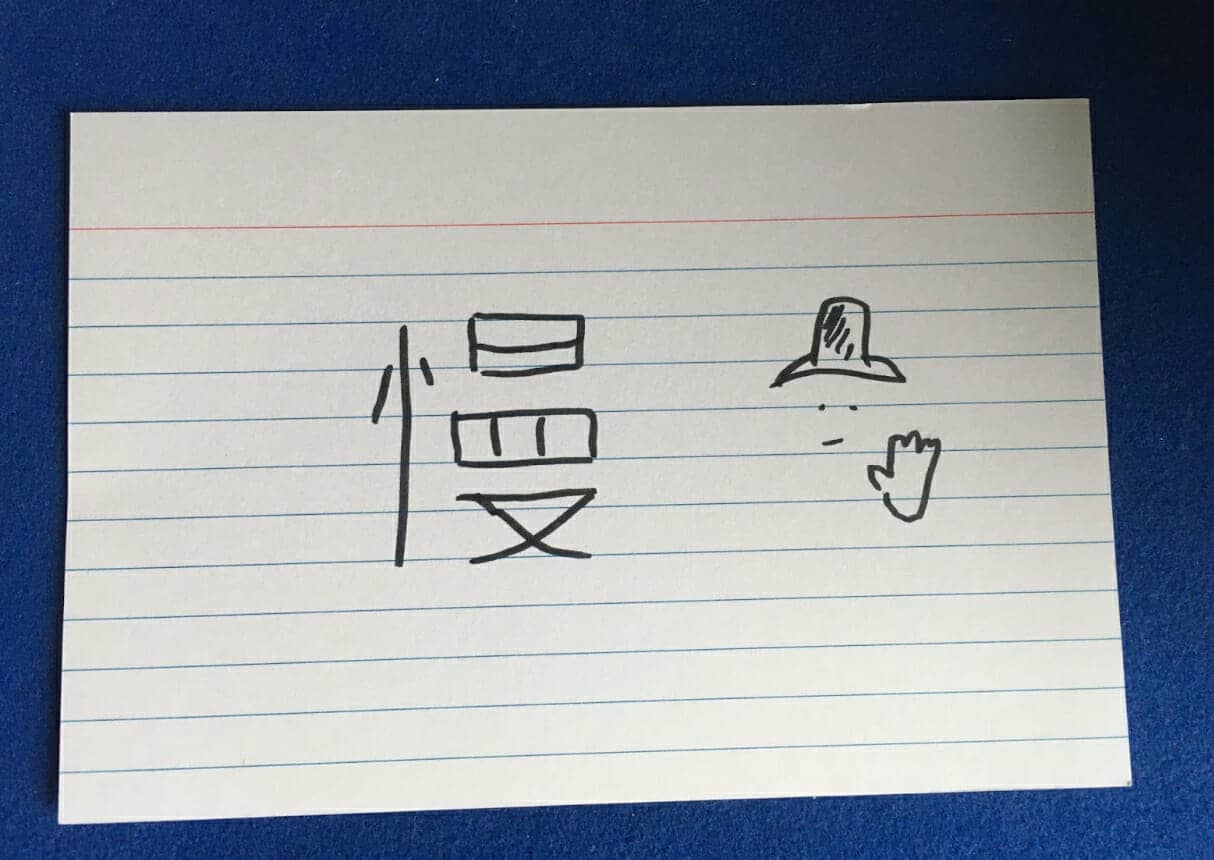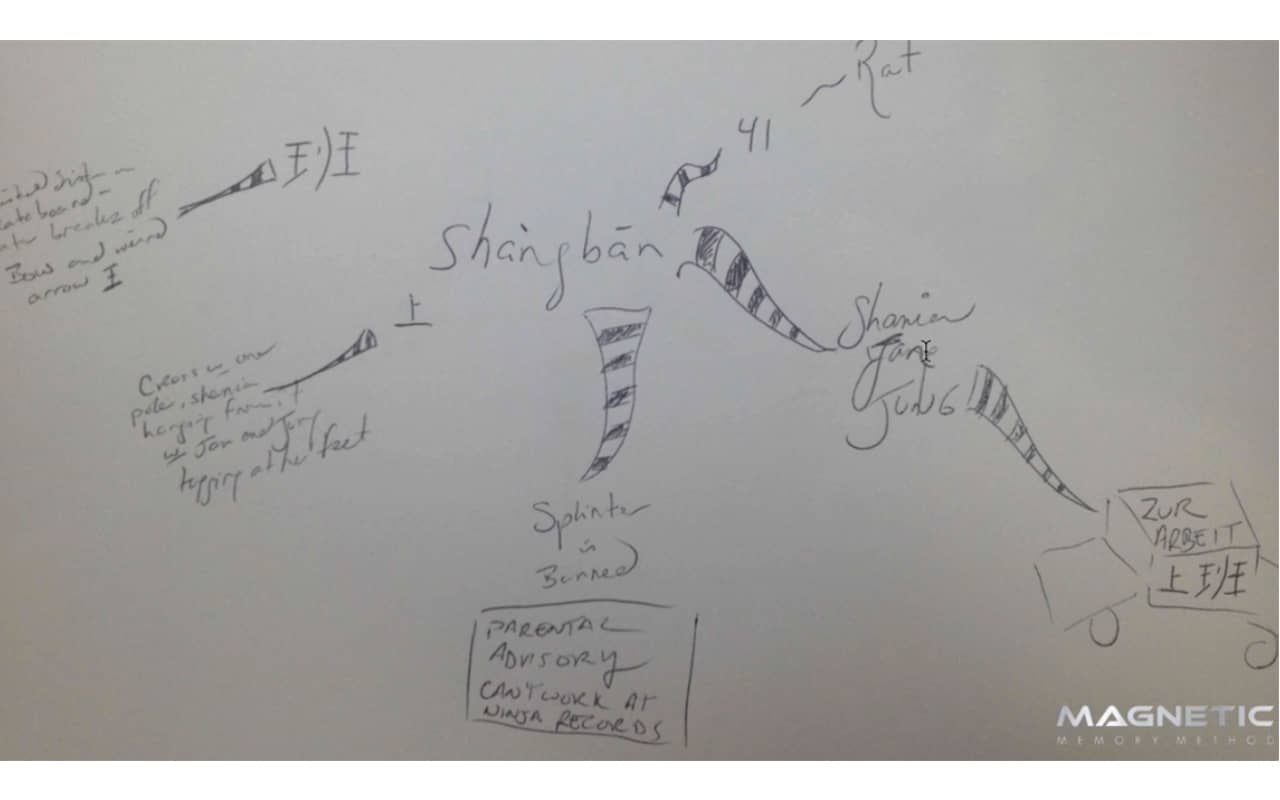 If you’re looking for the best way to memorize Chinese characters, it’s time for a wake up call.
If you’re looking for the best way to memorize Chinese characters, it’s time for a wake up call.
There is no “best way.” Anyone who wants to learn them needs to combine a few different approaches.
This is because a lot goes into each Chinese character, 汉字 (hànzì).
And when I found myself taking a level III course in Mandarin, I had limited time to study, but I wanted to pass the test.
On this page, you’ll discover how I scored 99% on my final exam. Not only could I read almost every character we encountered, but I was able to chat with my teacher too.
Ultimately, what made remembering Chinese characters so fast and efficient was a combination of methods.
You’ll discover each and every one of them on this page.
So if you’re ready to become a memory master for even the most complex information in the world, let’s dive in!
How to Memorize Chinese Characters Fast in 10 Steps
As you learn the simple steps and memory strategies you can use to rapidly commit dozens of Chinese characters to memory, let’s cover a few basics first.
You’ll want to make sure that you have:
- A solid source of Chinese learning materials
- Time set aside to memorize 4-5 times a week
- A strong reason why you’re learning Chinese
As I shared in my how to learn Chinese post with the full story of why I took the level III course with no prior classroom experience, I had a good reason for learning the language.
Knowing why you’re learning a language is very important. When challenges arise, as they surely will, you’ll be able to coach yourself back into action by remembering the reason for your mission.
You’ll also want to be aware of how to learn a new language overall. We’ll be focusing on how to learn Chinese characters fast, but being able to read Chinese is just one part of a holistic process.
Step One: Learn The Radicals
Chinese characters have a number of components:
- Radical
- Form
- Meaning
- Sound
A simple example of a radical is 口 (kǒu). It is a pictogram meant to represent a mouth. It appears in many characters, such as 比如 (bǐrú), which means “for example.”
It’s useful to know what radicals are because they can help you memorize the meanings of characters. Knowing that people often give examples with their mouths helps your brain remember that 口 is in the character combination 比如 (bǐrú). You’ll want to draw upon radicals in this way often, so beware of other teachers online who tell you to ignore them. They’re very useful.

Step Two: Use the Forms
Many times, the form of a character can help you remember what the character means.
For example, 人 (rén) means “person” or “people.” The character looks like a walking person from the side.
Not all characters work this way, but many do, and this mnemonic device is incredibly useful. Harness its power as often as you can.
Step Three: Use the Earlier Forms
Chinese characters have preserved many of the ancient forms. For example 又 (yòu) somewhat resembles a hand.
The best way to access all the early forms you need to help you see the drawings in Chinese characters is the Outlier Linguistics Pleco app. I used this a ton when studying for my test.
The more you dig into the history of the characters, the more your mind will naturally tell stories that help you link the images to the meanings.
Step Four: Use Associations
As you can see, there are many characters that resemble the object they are pointing to in the world. That, or there is some kind of visual reference that will help you work out the meaning and sometimes the sound when you know the history of the character.
But whether or not the images in the characters remind you of the meaning, you can make associations that will trigger that information.
We just looked at 又 (yòu) and suggested that it resembles a hand.
Now look at how it appears in 朋友 péngyǒu, the word for friend.
Remember 人 (rén) for person or people? Although 人 (rén) is not exactly the same as the the t-like radical 友 that encases 又 in this example, it’s as if 人 is stretching out to embrace 又. The mental association that a person embracing a hand can easily help you remember the concept of “friend” and “friendship.”
朋 is actually 月 (yuè) twice. On its own, it means moon. As a radical in this word when presented twice, it is pronounced péng.
This is where you will either feel frustrated or see a tremendous opportunity to start figuring out how Chinese characters work. I suggest you choose curiosity and keep pushing forward.
Because to remember that two moons together means péng and is related to friends just requires you to think up some kind of story. For example, you could alter an English phrase, such as, “I only see my best friends once in two blue moons.” Altering this phrase will help make it more memorable.
Once this word part is established in memory, you’ll be able to use it again. For example, it appears in 宾朋 (bīnpéng), which means guests or invited friends.
Have a closer look at 宾(bīn). It looks a bit like a house, so you can imagine a house that looks like a trash bin to help you remember the sound and meaning of the character. You then just have to tell a little story that helps you imagine you or someone else inviting some friends to a garbage bin… or rather, a house that looks like one.
Step Five: Strategically Store Your Associations
Although we can share mnemonic examples all day, what matters is that you understand the theory of association. The sooner you get started, the sooner you’ll be able to create memorable associations using a variety of deeply personal ideas and images from your own mind. The science of active recall demonstrates that this is the fastest and most reliable way to learn in a way that is fun and effective.
The next step is to mentally store all of these associations for review. Review is needed so that your brain can form firm long term memories as quickly as possible.
There are three main ways you can store your associations:
- Flashcards
- A software program like Anki
- A mental tool like the Memory Palace
Or you can explore a combination of all three. For example, I will sometimes:
- Draw my own flashcards
- Photograph them for use in Anki
- Memorize them using a Memory Palace

In the above example, 慢 màn means slow. Although my drawing is very simple, it is Johnny Cash, also commonly know as the man in black. I imagine him standing beside a director’s chair while making a movie. He’s telling his actors to slow down.
I made this story because the characters remind me of exactly that: A man standing beside a folding chair. It took just a minute to draw it, take a pic and get it into Anki and a Memory Palace for review. And now I know the word and the character more or less permanently.
No matter how you make and store your associations, here’s the key:
You want your associations readily accessible so you can perform review (active recall) effectively. The more you practice with the association-storage tools you choose, the more efficiently you’ll learn.
Step Six: Recall Rehearsal
We all need a review strategy to form memories. But the good news is that using the memory techniques we’ve been discussing will reduce the amount of repetition needed. The best part is that these strategies completely eliminate rote learning, which is boring and usually ineffective.
To review effectively, I use the Memory Palace technique to follow certain patterns.
Let’s say I have 10 Chinese characters in a Memory Palace. I follow this pattern:
- Review all 10 characters forward
- Review all 10 characters backward
- Start from the middle and move to the beginning
- Start from the middle and move to the end
- Skip the stations
By following these patterns, you’ll benefit from what memory scientists call the primacy effect, recency effect and serial-positioning effect. These effects have been known for over 100 years after being identified by Hermann Ebbinghaus.
These review principles form the basis of most spaced-repetition software programs, but using a technique like the Memory Palace is often much more effective. If you like using flashcards, you can also explore a review system called the Zettelkasten technique. It’s nearly identical to the Leitner Box System, which is also powerful if you set it up correctly.
What’s the advantage of the Magnetic Memory Method and how it uses Memory Palaces for Chinese?
Simple. When you store all of your associations in your mind, you can practice reviewing them anywhere. You strengthen your mind and get some much needed “digital fasting,” instead of being constantly tethered to your device.
Step Seven: Use the Big Five of Language Learning
Watch Chinese movies and series to learn characters and boost memory through entertainment? Yes and no.
The yes part is for when you know enough characters to read at the speed of speech. When that time comes, you can use Netflix to practice reading Chinese characters.
Until then, what matters is that you get in ample doses of:
- Reading
- Writing
- Speaking
- Listening
- Memorizing
For speaking practice, make sure to book lessons with teachers. I really like italki and Lingq. They both make it easy to find native speakers to practice with.
For reading, Mandarin Companion produces the best graded readers I’ve seen so far.
Listening materials are easy to find, but you want to always make sure you’re getting sensible input. Start simple and then gradually increase the difficulty.
MandarinHQ has an amazing online Chinese course that allows you to scale the difficulty by watching native speakers with or without the characters on the screen. You can also watch with or without pinyin and without anything on the screen at all. It’s excellent and I highly recommend their program.
When it comes to writing Chinese characters, having a teacher who can assess your progress is key. These days, you can learn remotely by simply snapping pictures of your homework and sharing them with your language learning teachers.
Step Eight: Explore Mind Mapping
Chinese characters aren’t just about characters. You also need to learn the tones and pinyin along with the sound and meaning.

To help myself with that, I started mind mapping the characters I needed to know to pass my test. In fact, I fused mind maps with the Memory Palace technique using what I came to call the CAMP MIST formula.There are a few ways to use mind maps for language learning, so if you’re interested in this technique, be sure to dive further into it.
Step Nine: Set Specific Goals
Many people get into learning a language with a huge generic idea of getting “fluent.”
But most language learning experts agree that this rarely works.
Instead, we need to set specific goals.
Luckily, Chinese educational programs have long followed the HSK standard, which is based on levels. These tell you how many words you need to know for each level.
The exact levels HSK uses change each year, so bookmark CLI’s page about them. They update their information about HSK frequently.
(Incidentally, I once taught a 3-day memory training seminar at CLI. I highly recommend visiting their campus if you have the chance.)
To set a reasonable goal, pick one of these levels, learn all the characters needed to pass it. Then set a goal to master all of the characters for the next level.
Of course, you can learn characters from different levels, but generally, it’s a good idea to focus on completing these levels. They are well structured.
Step Ten: Create Your Own Character Lists
In addition to following the HSK vocabulary lists, you should create your own “must know” characters you want to learn.
This list can have individual characters or cool phrases that interest you.
When I taught memory techniques for learning Chinese at CLI, I’ll never forget Tom. He followed my suggestion on day two. The very next day he came back and had memorized 20 成语 (chéngyǔ) or idiomatic expressions.
He had always wanted to memorize them and he found it to be a cinch using the techniques we’ve discussed today.
When you balance the HSK lists with the characters you want to know, you’ll progress much faster.
Remembering Chinese Characters Is Fun
Memory techniques for memorizing Chinese characters are direct, fast and fun.
The only catch is that you have to learn how to use the techniques and practice applying them.
But the best part is that you can learn the characters while practicing both memory techniques and your Chinese. It’s a win-win.
To help you create even more progress quickly, please consider registering for my FREE Memory Improvement Kit:
It takes you deeper into creating well-formed Memory Palaces for Chinese and the tips needed for continual growth as you continue memorizing Chinese characters.
So what do you say?
Are you ready to double or even triple how quickly you’re learning Chinese?
Onward!
Related Posts
- How to Memorize Chess Openings: 5 Simple Steps
When learning how to memorize chess openings, it's important to have your Memory Palace technique…
- How to Memorize a Map: A Proven Process Anyone Can Use
Maps are an interesting way to create a Memory Palace plan for storing and retrieving…
- How to Memorize a Prayer in 5 Simple Steps
Knowing how to memorize a prayer creates total mental peace and connection. From the Lord's…








